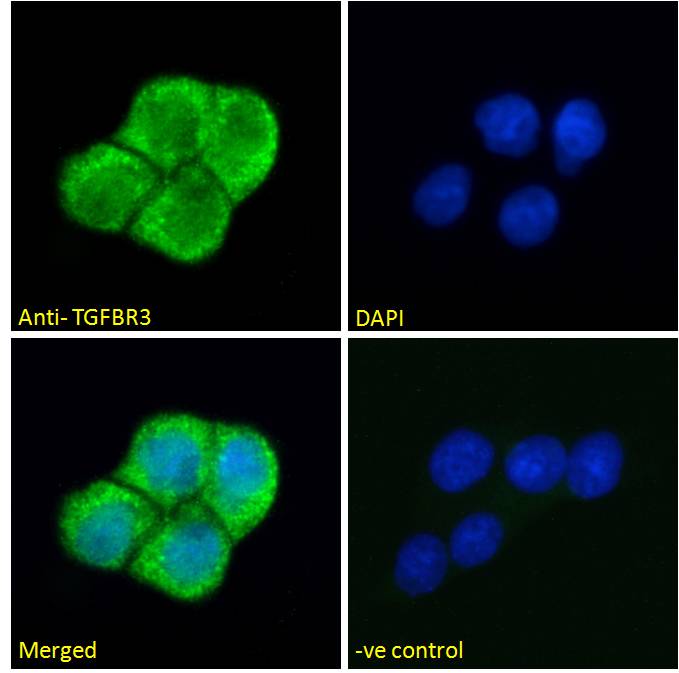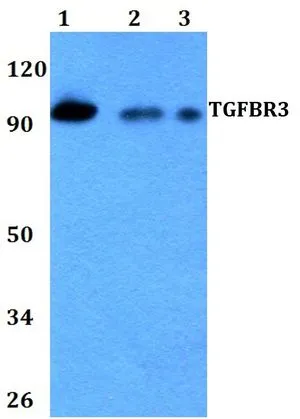TGF beta Receptor III antibody
GTX10854
ApplicationsWestern Blot, ELISA
Product group Antibodies
TargetTGFBR3
Overview
- SupplierGeneTex
- Product NameTGF beta Receptor III antibody
- Delivery Days Customer9
- Application Supplier NoteWB: 1-2 microg/ml. ELISA: 0.5-1 microg/ml. *Optimal dilutions/concentrations should be determined by the researcher.Not tested in other applications.
- ApplicationsWestern Blot, ELISA
- CertificationResearch Use Only
- ClonalityPolyclonal
- ConjugateUnconjugated
- Gene ID7049
- Target nameTGFBR3
- Target descriptiontransforming growth factor beta receptor 3
- Target synonymsBGCAN, betaglycan, transforming growth factor beta receptor type 3, TGF-beta receptor type 3, TGF-beta receptor type III, TGFR-3, betaglycan proteoglycan, transforming growth factor beta receptor III
- HostGoat
- IsotypeIgG
- Protein IDQ03167
- Protein NameTransforming growth factor beta receptor type 3
- Scientific DescriptionMost mammalian cells express three abundant high affinity receptors, which can bind and be cross-linked to TGF beta: the type I (53 kDa), type II (65 kDa), and type III (100-280 kDa) receptors, based upon the molecular mass of the cross-linked products analyzed by gel electrophoresis. Tbeta-RI and Tbeta-RII, the type I and II receptors, are type I transmembrane proteins with cytosolic domains containing a serine-threonine kinase. Both receptors are essential for signal transduction. The TGF beta type III receptor, or betaglycan, is a membrane-bound proteoglycan with a short cytoplasmic tail that has no apparent signaling motif. It binds TGF beta 2 (apparent Kd 100 pM) with slightly greater affinity than TGF beta 1 or TGF beta 3 (apparent Kda 300 pM). The main role of betaglycan seems to be in binding and then presenting TGF beta ligand to the signaling receptors Tbeta-RI and Tbeta-RII; overexpression of Tbeta-RIII in L6 myoblasts leads to a dramatic increase in TGF beta 2 binding to Tbeta-RI and Tbeta-RII.
- Storage Instruction-20°C or -80°C,2°C to 8°C
- UNSPSC12352203






